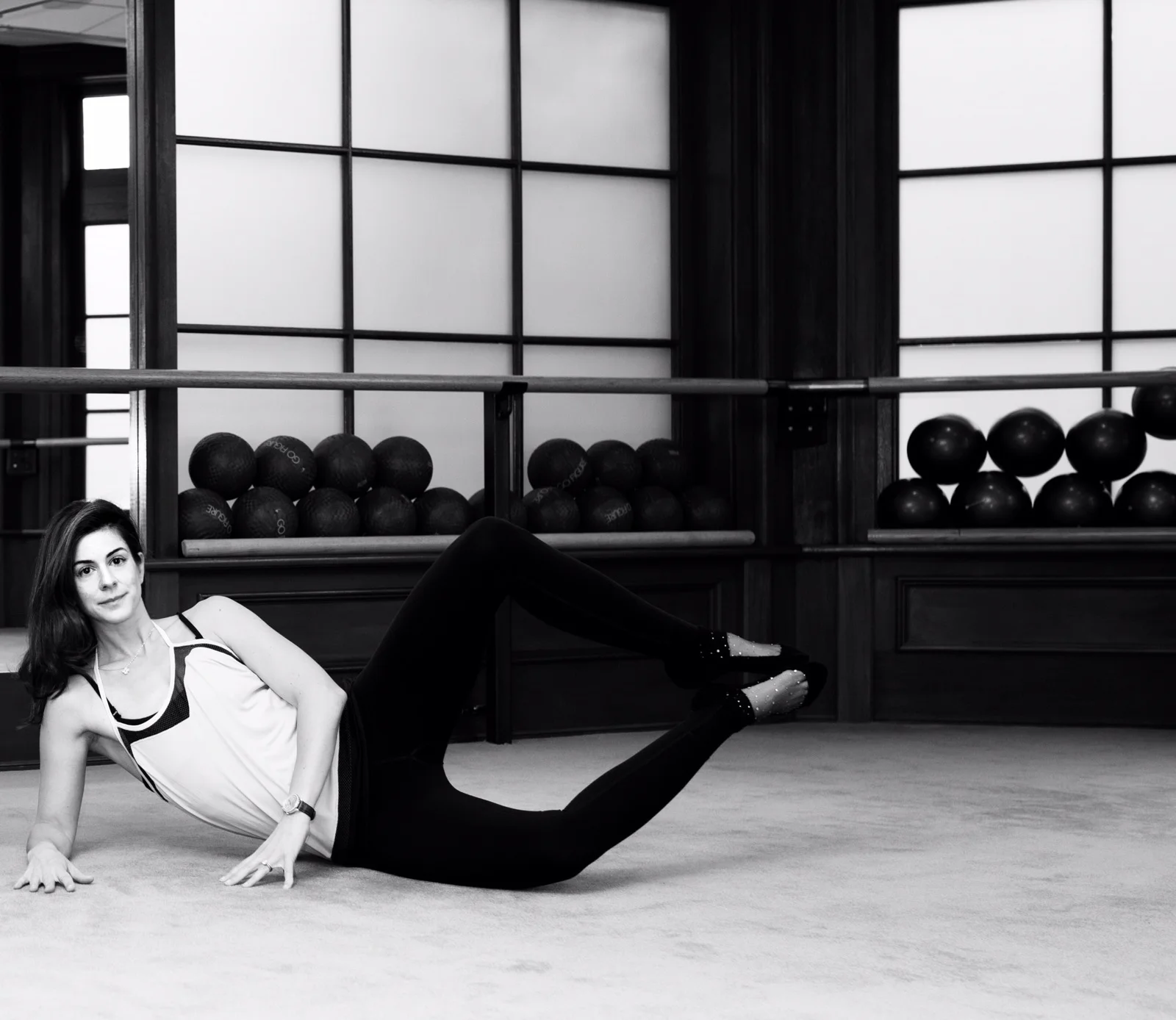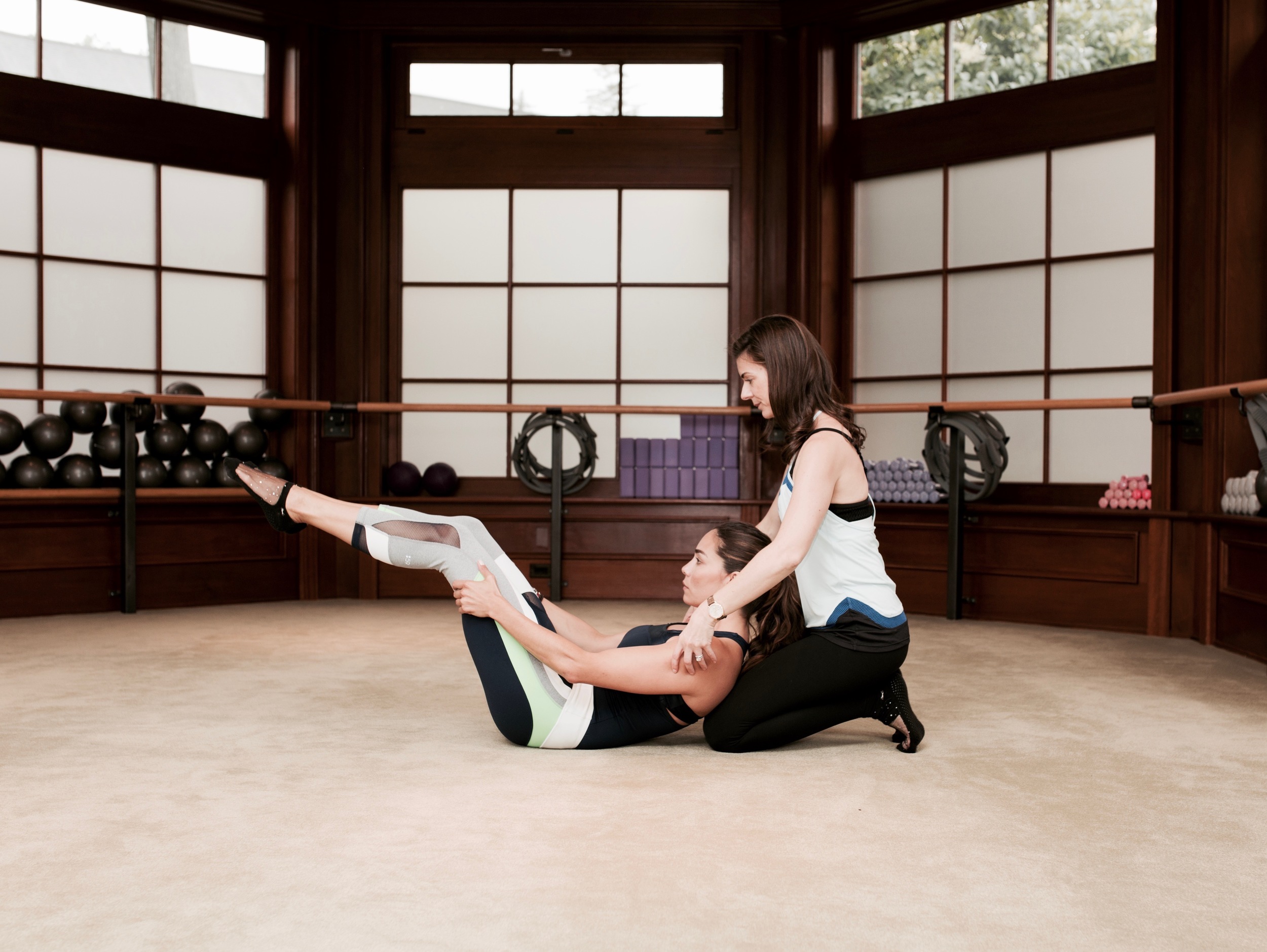The lithe, elongated ballerina body is one of the most coveted figures on the planet— and for good reason. Ballerinas are strong, sexy and lean with toned muscles and no bulk.
Founded in 1959 by Lotte Berk, a former ballerina with an injured back, the Barre method focuses on tiny, repetitive isometric movements to help burn fat and sculpt lean muscle. It’s an incredibly challenging and ultimately rewarding workout and we can’t get enough.
We’ve been hitting the barre studio for about a year for strength and flexibility building results; we recently took a class at the Go Figure Barre Studio in Greenwich, CT and fell even more in love with the workout. Go Figure incorporates traditional ballet movements, pilates, yoga and basic orthopedic movements to strengthen and condition the entire body. It’s a seriously tough workout but so incredibly satisfying. We spoke with owner Christina Schwefel about her favorite post-workout snack, the best Barre duds and how to stay motivated mid-workout.
P7: What is one piece of advice you would give to someone who is new to the Figure Method?
CS: This method can be intimidating for new clients because it can get intense! It is not unusual to have a shaky sensation in nearly all muscle groups in the first session. But guess what? Clients who have been taking Figure Method for more than 10 years still shake when they take class! It never gets easy, you just get stronger.
P7: What should I be eating or drinking pre-workout?
CS: Before a Figure Method class, lots of water and your protein of choice will help fuel you through class.
P7: What’s your favorite post-workout way to refuel?
CS: I absolutely love green juice! It helps energize me post-class and also kills sugar cravings.
P7: What’s your favorite part of class or move?
CS: I have so many favorites! I love the arm sequence (with weights) because I enjoy the fluidity and I see real results quickly in this area. I always love seat work! We were in a side lying clam position, which is a move that targets the side seat and the hamstring-seat connection. It is especially gratifying to see the shake in this muscle! Unlike traditional glute work (e.g., squats) which can broaden the muscle, this move helps to lift the seat off the back of the leg, giving a more defined posterior. Who doesn't love that??
P7: How do you challenge yourself to work deeper in class?
CS: Now having 3 children, I have to keep a particular focus on my abdominal muscles which have become weakened. This is the first part of my body that tends to be out of form when I lose my focus. Whenever we are in a challenging position, I close my eyes and focus inward, go through my anatomy checklist in terms of my form and posture, engage the muscles more deeply, and breathe! I try to stay in the work to find a deeper mind-body connection and pave the way for the next time I find myself in the same position : )
P7: What advice do you have for beginners who are looking to push themselves further in their workouts?
CS: I would advise any new student to really engage our instructors, who are a tremendous resource. Many of our instructors have been practicing this method for over 10 years (some for more than 18 years!) and were trained by the originator of all barre-based methods, Lotte Berk. Our instructors are happy to take questions pre-or post-class regarding any exercise, and to walk through the set-up in a one-on-one format. If you are in class and make it through any given exercise without really feeling it, chances are you were not in correct form! It is worthwhile to spend even 5 minutes with an instructor. One small adjustment can make a world of difference.
P7: What motivates you to come to class continually?
CS: The results. When I am in class, I am often surrounded by women who range in ages from 18 to 80. There is nothing more motivating than seeing a woman who is 20 years older than me in perfect form in her push ups, with amazingly cut arms, a lifted seat, toned legs and an overall long and lean appearance. This is a method for the lifespan because it is joint friendly and low impact. I am very motivated by real results and the idea that I can continue to achieve them for the next 30 years!
P7: Who’s on your playlist for your classes?
CS: We really do vary it up! Everyone from Kygo to Bieber to Armin van Buuren to Pearl Jam! It really depends on the teacher.
P7: What part of class is the most challenging for you and how do you work on improving that?
CS: Right now I would say the rectus abdominal work at the close of class. I have a separation in these muscles (common after having multiple children) and I have to be very careful not to bulge this muscle when coming into movement like crunches. It takes a tremendous amount of focus. I work on improving it every day! And it is one of the major areas of focus in our continuing education series required for all instructors. The more we learn from physical therapists and postural alignment specialists in these meetings, the better able we are to fuse this information with the principles of our method and deliver instructions that are clear and helpful for others in need of this same focus.
P7: What is the perfect thing to wear to a Barre Class? What are some of your favorite brands?
CS: Tights (my very favorite is anything high waisted from Splits59 or their tendu tight which wraps around the foot with a grippy bottom), and some layers! In colder months a high knee grippy sock or leg warmer, and at least two layers on top (my tank and then a layering tee). Grip socks are key! The support is necessary for the ball of the foot in releve work








